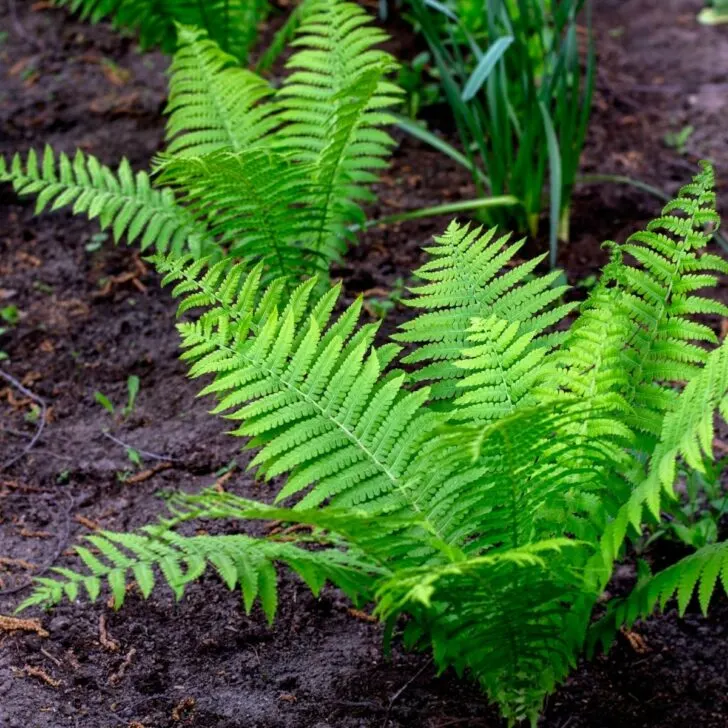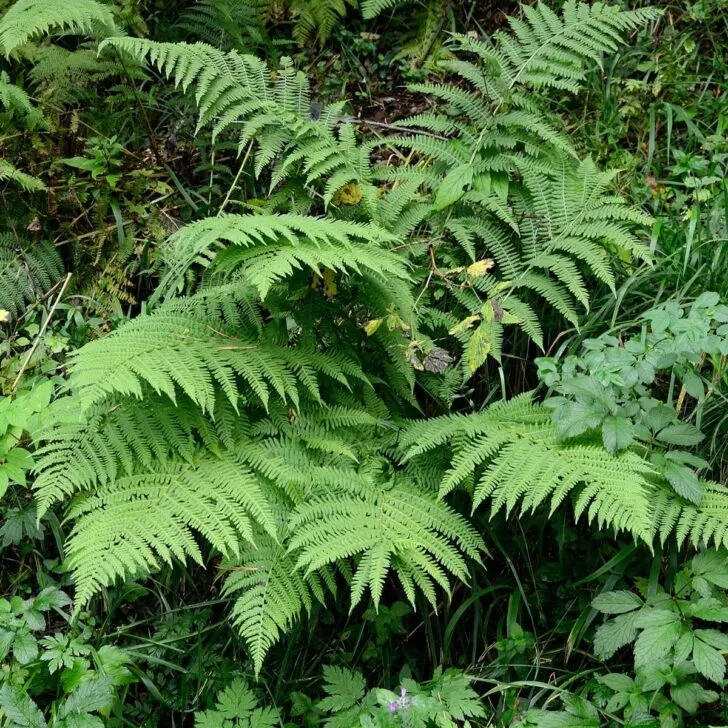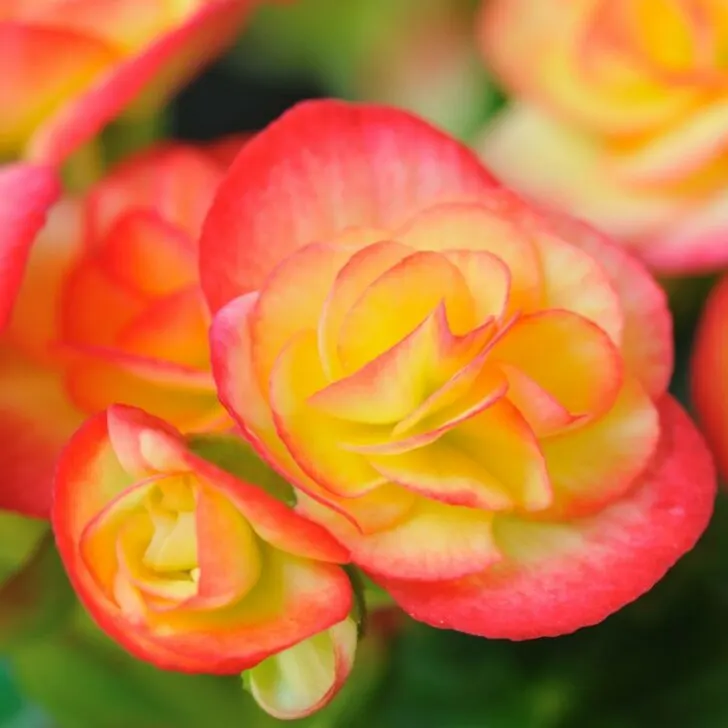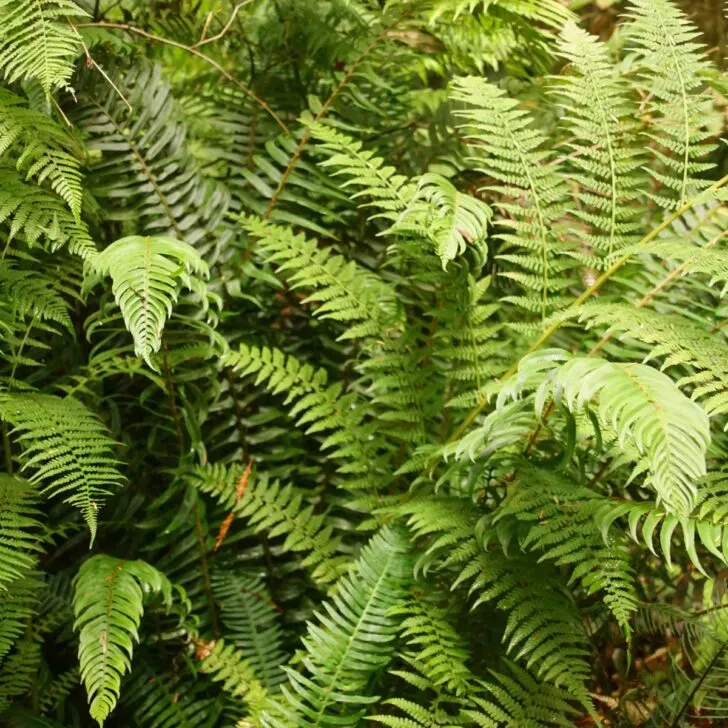Learn how to grow lady ferns and fill your shade garden with beautiful, feathery fronds that can reach up to three feet tall!

Lady ferns (Athyrium filix-femina) can add vibrant color and delicate texture to shady areas of your garden. The fronds of this fern are bright green in summer, turning to an attractive golden-yellow in late fall, and are supported on stems of various hues, from red to purple to green.
The lacy fronds of lady ferns have a feather-like appearance that stands out in a shady garden spot where the rhizomes can slowly spread, creating a luxurious ground cover. They are also easy to grow and require little maintenance.
This post contains affiliate links for your convenience. Purchases made through these links may earn me a small commission at no additional cost to you.
Where to Get Lady Ferns
These ferns are native to the U.S. and are not hard to come by. You are likely to find them in garden centers, and you can also buy them online.
Lady ferns propagate by rhizomes underground or spores on their leaves. The easiest way to increase your collection of your favorites species is to dig up a clump from an established plant in your garden, divide the fern, and transplant a section to a new location.
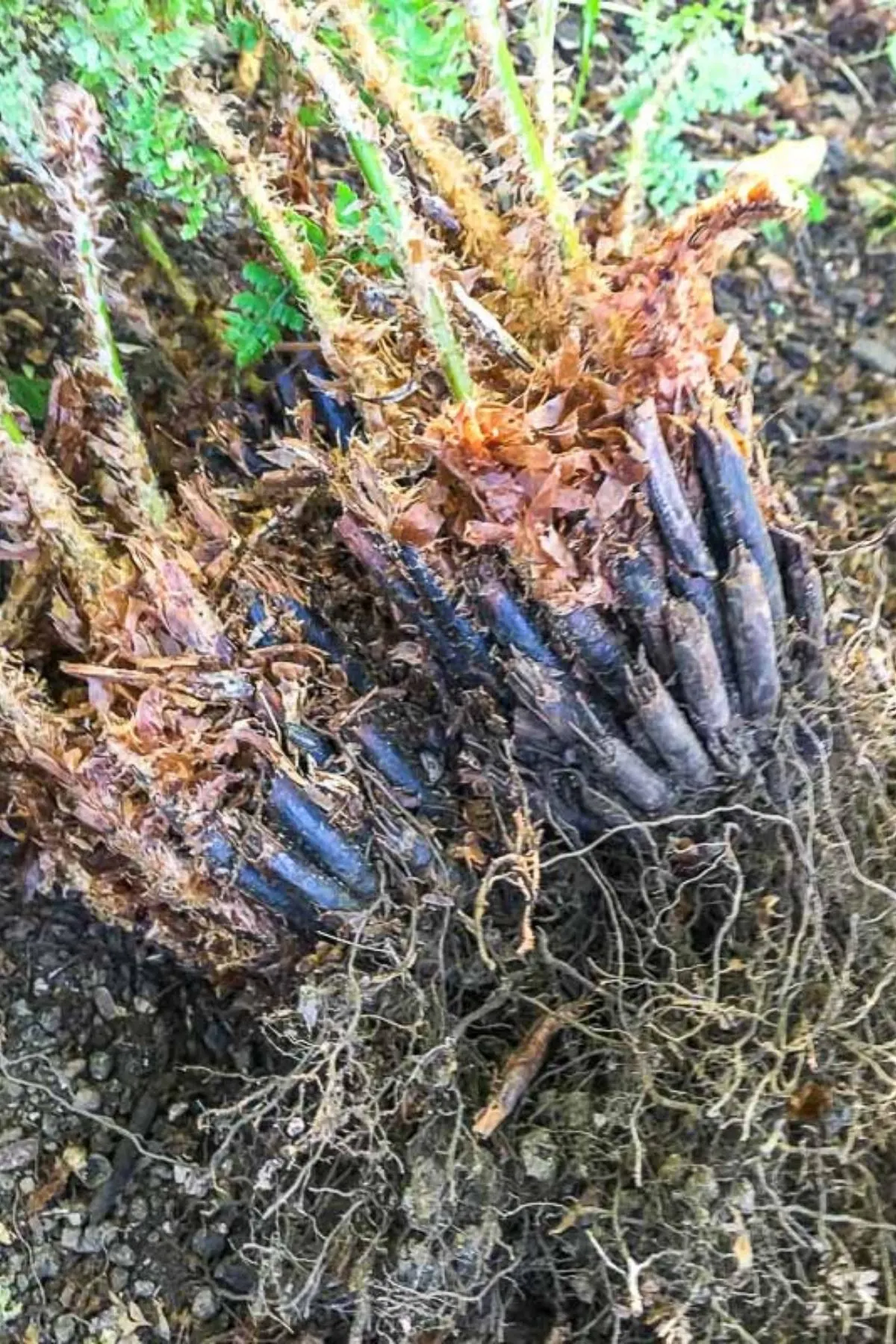
One thing to remember when looking for lady ferns is that there are over 300 cultivars. Some do best in northern areas, and others thrive in the humid south, so look for a cultivar suited to your geographic location. Typically, these ferns can thrive in zones 5-10.
In addition, the various cultivars have different types of foliage classified as feathery, crested, and crossed, so you have lots of design options for finding a cultivar to match your garden style.
When to Plant Lady Ferns
The best time of year to divide lady fern rhizomes is the spring or fall when the plants are not actively growing. Avoid transplanting or dividing established plants during hot weather and when frost is likely.
Where to Plant Lady Ferns
In nature, lady ferns grow in shady, moist woodlands with rich soil. So when choosing a spot in your garden, look for a location similar to their natural habitat. High winds can damage the foliage, so plant them in a protected site if you’re in a windy area.
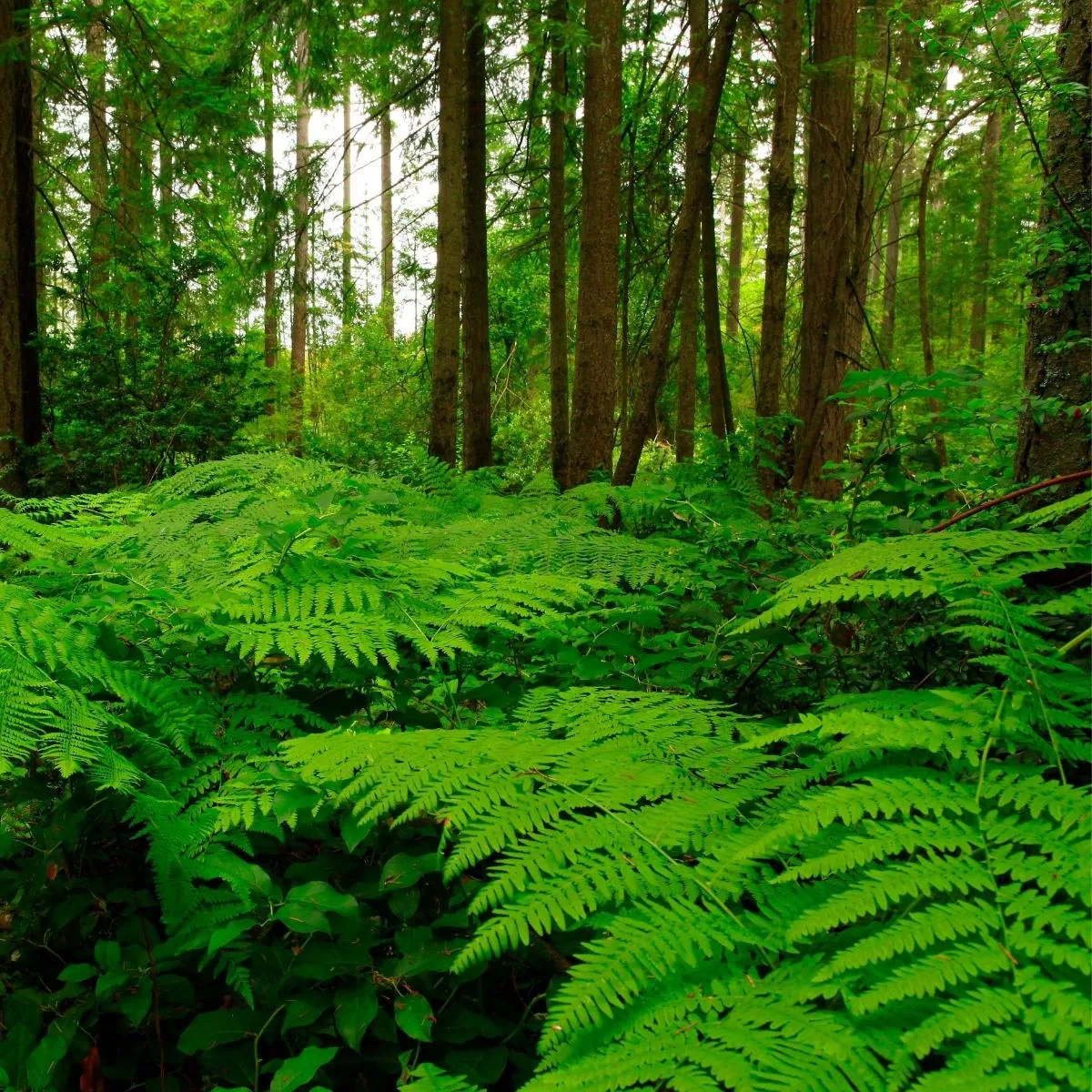
These ferns do best in partial shade with a small amount of dappled sunlight and moderately moist, humus-rich soil. However, once the plants are established, they can tolerate short dry spells but wilt and turn brown if the ground gets too dry.
Choose a shady spot in the garden near other plants that have similar light and moisture requirements, such as hostas and astilbe. Avoid areas that get direct midday sun.
Lady ferns need slightly acidic, well draining soil, so plant them in a location with fertile ground or amend the area with ample amounts of compost or other organic material.
How to Plant Lady Ferns
Start by mixing compost or decomposed leaves into the planting area and watering it deeply. If the soil does not drain well, you can add poultry grit and organic matter to improve the situation.
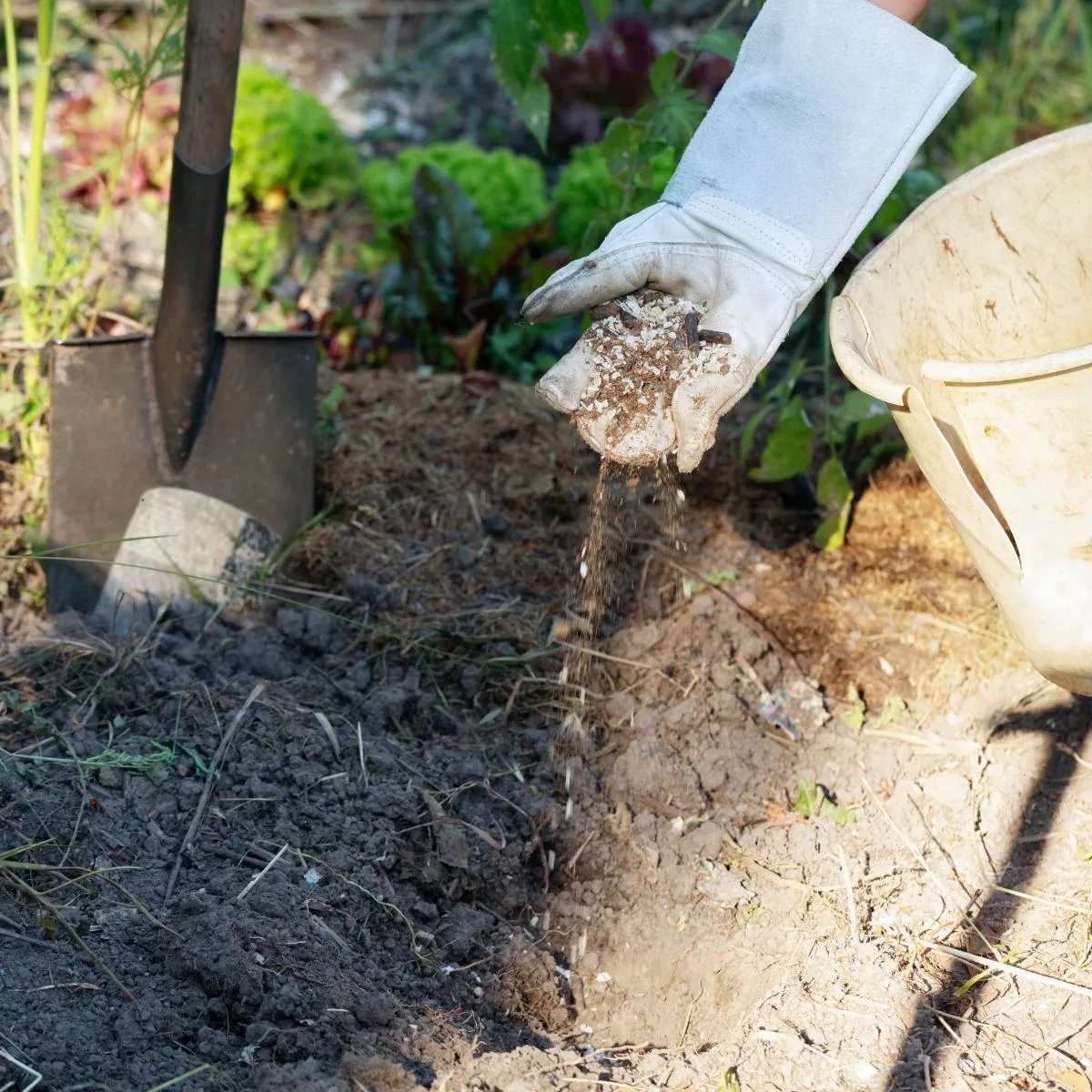
Soak the fern’s roots before placing them in the planting hole. Prepare a hole that comfortably fits the roots without needing to bend them.
After setting the roots into the hole, gently work the soil around them to fill the voids. Next, firm the soil over the top and water the plant right away to further settle the ground.
How Far Apart to Plant Lady Ferns
Lady fern plants can grow up to three feet high and two feet in diameter, so leave at least 24 to 30 inches between them. Remember that these ferns spread and multiply through their rhizomes. If you give them some room, they will expand and cover the ground over time.
Caring for Lady Ferns After Planting
This deciduous fern will lose its foliage in the winter after a hard frost. When the leaves are brown and wilted, you can prune them back to tidy up your garden bed for the winter. In spring, new fiddleheads emerge from the root crown and unfurl into fronds.
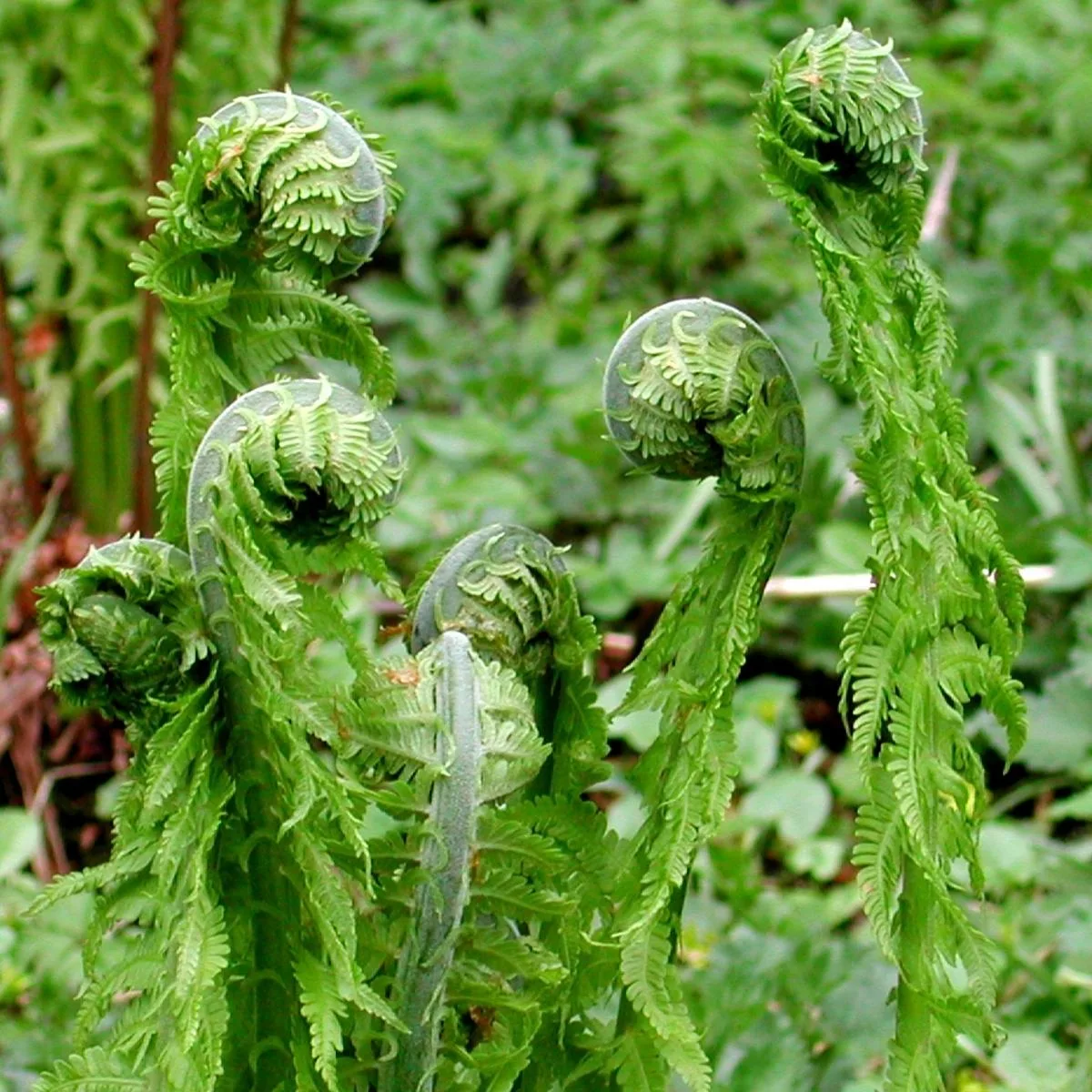
These ferns benefit from a layer of mulch around the base to keep the soil cool, prevent weeds from growing, and retain moisture. Dry grass, leaves, wood chips, and compost make good mulch for lady ferns and add nutrients the plant needs.
Ferns do not need much fertilizer, and a layer of compost in spring is sufficient to give them nutrients. Too much fertilizer can harm the plants.
Water lady ferns regularly to keep the soil moist, but don’t let it get soggy because it can rot the roots. Lady ferns are resilient plants, so if they dry out, give them some water, and they will likely spring back to life.
Frequently Asked Questions about Lady Ferns
Do lady ferns need pruning?
These ferns do not require much pruning except to remove broken stems and cut back dead foliage when the plants become dormant in winter.
Is lady fern a perennial?
Yes, lady ferns are perennial and will grow back each spring from their roots.
Is lady fern edible?
The young fiddleheads of lady fern are edible but cook them before eating. Also, take only a few fiddleheads at a time, so the plant still has plenty of new growth to form leaves.
Check out these other shade plant articles!

